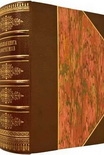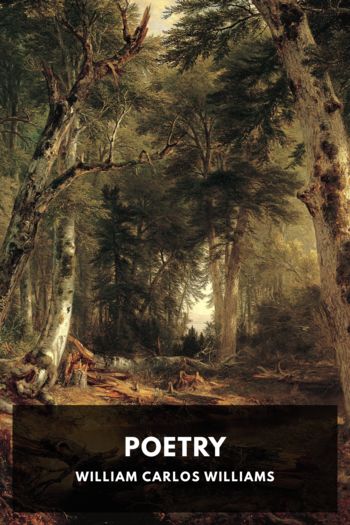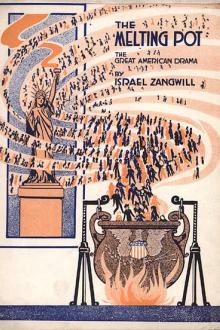No Modernism Without Lesbians, Diana Souhami [love books to read txt] 📗

- Author: Diana Souhami
Book online «No Modernism Without Lesbians, Diana Souhami [love books to read txt] 📗». Author Diana Souhami
In her final year, Gertrude, once the star pupil, was the only one in her class of fifty-four to get a grade lower than 3. She got 4 in ophthalmology, otology and dermatology and 5 in laryngology, rhinology and obstetrics. She said she thanked her tutors for failing her:
You have no idea how grateful I am to you. I have so much inertia and so little initiative that very possibly if you had not kept me from taking my degree I would have, well, not taken to the practice of medicine, but at any rate to pathological psychology and you don’t know how little I like pathological psychology and how all medicine bores me.
Other women students accused her of harming the struggle for equality and recognition. ‘Remember the cause of women,’ they said. Gertrude responded: ‘You don’t know what it is to be bored.’
Gertrude recounted this in the 1930s when she was sure of her influence and status, safe in her personal life, respected by her peers, confident of her judgement, opinions and views. At the time, academic failure coincided with emotional and intellectual confusion and unhappiness. Her unworkable love affair infected her with rootlessness and uncertainty.
London then Paris
In the summer of 1902, Gertrude joined Leo in Italy, then they travelled together to London and rented rooms in Bloomsbury. Leo bought his first oil painting – a seascape by Philip Wilson Steer, who was an influential art teacher at the Slade and a friend of Sickert. Leo said he felt like a desperado: oil paintings were for the rich. He and Gertrude visited the art historians Bernard and Mary Berenson in Surrey and met Bertrand Russell, ‘a young mathematician of genius’, Leo called him. Russell was married to Mary Berenson’s sister Alys.
Discussions with the Berensons and Russell set Gertrude thinking about the novel she wanted to write: The Making of Americans: Being a History of a Family’s Progress, her 900-page novel about herself, ‘bottom nature’ and ‘every kind of men and women and all the kind of being in them’.
I wanted to find out if you could make a history of the whole world, if you could know the whole life history of everyone in the world, their slight resemblances and lack of resemblances…
With the Berensons and the Russells, she and Leo discussed where and how to live: ‘We have America versus England disputes all the time,’ Leo wrote. ‘The general theme is why in the name of all that’s reasonable do you think of going back to America.’ Gertrude planned to stay away for a year to free herself from May Bookstaver, but when Leo returned to Paris in December she was lonely.
She spent her days in the British Museum Reading Room. She planned to read all English literature, from the sixteenth century on, as background material for her novel about everybody in the world. She bought little grey notepads, made lists of books to read, arrived at the museum early in the morning, copied out passages that resonated, took breaks only when hungry and read until closing time. When not in the museum, she wandered the streets of London and felt homesick for America and depressed:
The time comes when nothing in the world is so important as a breath of one’s own particular climate. If it were one’s last penny it would be used for that return passage…
An American in the winter fogs of London can realise this passionate need, this desperate longing in all its completeness. The dead weight of that fog and smoke-laden air, the sky that never suggests for a moment the clean blue distance that has been the accustomed daily comrade, the dreary sun, moon and stars that look like painted imitations on the ceiling of a smoke-filled room, the soggy, damp miserable streets and the women with bedraggled frayed-out skirts…
Gertrude endured this until February 1903, then headed back to Baltimore. She shared a flat with Johns Hopkins friends: Mabel Weeks, Harriet Clark and a sculptor, Estelle Rumbold Kohn. She wrote notes for possible stories, analysed herself and her friends but became ensnared again in the affair with May. She despaired, felt they were incompatible, that ‘their pulses were differently timed’ and that this incompatibility had been there from the start. In summer, in a renewed effort to get away from the emotional tangle of her affair, she sailed to join Leo in Paris, intending the visit to help separate her from May. From then on, Paris became her permanent home.
with Leo in Paris
‘Paris was where the twentieth century was’, Gertrude wrote, ‘the place that suited those of us who were to create twentieth century art and literature.’ She was twenty-nine and ambitious to be a writer. In Paris she flourished as who she was. ‘Our roots can be anywhere and we can survive because if you think about it we take our roots with us,’ she said. It was not just what Paris gave, but all that it did not take away.
Leo had paved the way for her. Before she joined him, he had travelled to Japan, Ceylon, Cairo, collecting prints and art objects but uncertain which of his many interests to pursue. He went to Paris in 1902, intending to look at paintings. In his impulsive way he then decided to become an artist. He booked into a hotel, enrolled, like many Americans, at the Académie Julian at 28 Boulevard St-Jacques in the 6th arrondissement, did drawings of statues in the Louvre and life studies of his own body, and set out to learn the art market. He was a sociable man, intensely curious, and in Left Bank Paris writers and artists were valued. The art critic Bernard Berenson was his mentor, the cellist Pablo Casals a dining companion.
Leo’s maternal uncle, Ephraim Keyser, a sculptor and teacher, told him of a studio for moderate rent at 27 rue de Fleurus,





Comments (0)